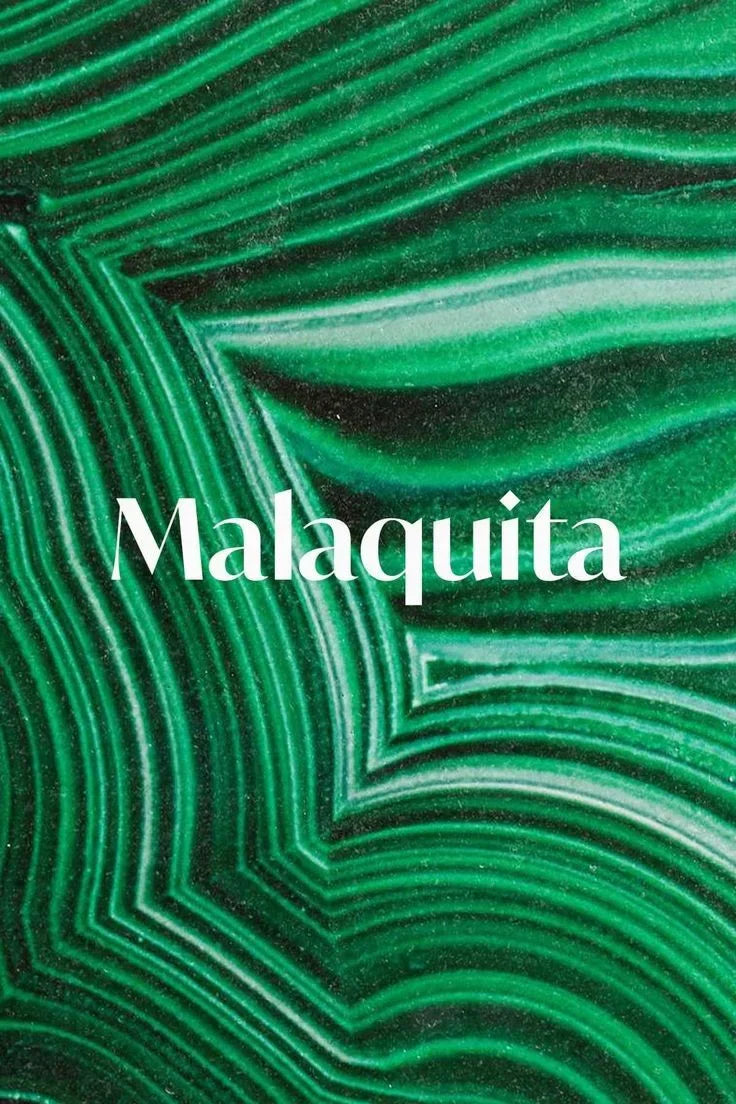
Malachite
Share
For thousands of years, malachite has been used by humans on Earth. The Egyptians were the first to use it to protect pregnancy, believing that wearing a stone around their neck would protect them from harm during childbirth. To wear this substance during pregnancy, Egyptian women often tied it to their clothing or placed it in an amulet so that Thueris would continue to protect them after birth. Among both the Greeks and Romans, malachite was used as a protective measure against various types of injury and illness, whether worn internally or externally. In Ephesus (in present-day Turkey), stones with engraved symbols were used in decorative pieces such as trinkets or in the decoration of the Temple of Artemisia, a site still recognized today for its spectacular architectural features, such as the slender columns with ornate capitals supporting elaborately carved architraves.
Malachite belongs to the carbonate group. It has a hardness of between 3.5 and 4 on the Mohs scale, making it soft enough to be used as a gemstone, with densities that can vary around 3.65–4.05 g/cm3 and a monoclinic crystal structure—meaning that a single crystal line runs through it, as the eye would see if looking at the stone along its longitudinal axis (known as radial lines).
Malachite is fragile and must be handled carefully to prevent damage from heat or liquids, as its hardness is higher than that of most other minerals. Furthermore, when polished, this gem produces striking concentric rings that compensate for its striking color variations, providing greater visibility in terms of depth perception! When mixed in an aqueous solution, acid chlorides also cause a certain fizz in these crystals...
The origin of the name Malachite can be based on two theories. The most plausible theory currently is that from the Greek "Malakos," meaning "soft," referring to its softness and the ease with which it can be scratched. Malachite has a hardness of 3.5 to 4 on the Mohs scale, making it one of the softest stones, easily broken with simple tools such as sandpaper or trowels without causing much damage or cracking. This makes it an essential stone for jewelry artists and lapidaries working with delicate objects, as damage from sanding does not result in broken pieces as other harder materials would.
Another interesting etymology of Malachi comes from the Latin "malakhe", which means soft green.
Properties of Malachite:
It brings out the wearer's persuasive powers, allowing them to speak in a structured, clear, and concise manner. Its properties also include protection against negativity, as it doesn't absorb negative energy but instead covers it up. Wearing this stone is often associated with the heart chakra or higher chakra to balance the soul energies within each of us, physically balancing our bodies by increasing feelings of strength, courage, vigor, and power, while also opening our hearts with more kindness toward others; primarily through its ability to bring insight into people we are considering forming relationships with, whether friends or business partners, through information gained about their life paths and the possible future outcomes should they form such bonds.
Malachite is a stone of change, aiding transformation and risk-taking. It also harmonizes relationships and life in difficult or family situations. Negative vibrations are absorbed by the stone, for example, pollution that can disrupt homeostasis (the status quo). It is a powerful stone if used with care. It amplifies both positive and negative energy. It grounds spiritual energies on the planet. It is a protective stone.
The color green inspires hope and serenity. If you have trouble sleeping due to an overactive mind, placing malachite on your nightstand or under your pillow will help you sleep more easily. In addition to helping us sleep better thanks to the vibrations of the stones themselves and the responses we give them during rest periods when we're unconscious, they'll protect us from nightmares while we sleep.
*Must be cleaned frequently * Before and after use. Do not use salt. It can be done in the sun with selenite.
Info: Quartz Books, Internet.
